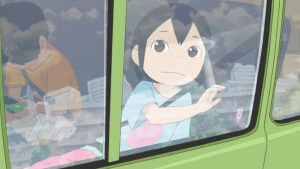 I’ve noted it before, but there’s just no substitute for talent. When a genius is behind a project you can pretty much always tell, even if the project itself doesn’t work. I have no reservations in calling Yuasa Masaaki a genius, even if I’m not a fan of everything he does. He and his regular team of artists (especially Eunyoung Choi, who may be a visual genius at or even above Yuasa’s level) can always be counted on for fabulous creativity and moments of stunning imagination. After that, it’s a case-by-case basis.
I’ve noted it before, but there’s just no substitute for talent. When a genius is behind a project you can pretty much always tell, even if the project itself doesn’t work. I have no reservations in calling Yuasa Masaaki a genius, even if I’m not a fan of everything he does. He and his regular team of artists (especially Eunyoung Choi, who may be a visual genius at or even above Yuasa’s level) can always be counted on for fabulous creativity and moments of stunning imagination. After that, it’s a case-by-case basis.
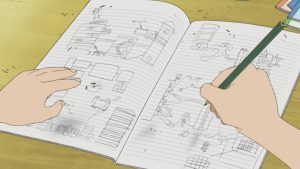 As for Eizouken ni wa Te o Desu na!, I only knew it from a very tiny portion of the manga – as only four chapters have been translated. To be frank it didn’t strike me as especially noteworthy, though I recognize that’s hardly a definitive sample size. Coupled with the fact that my track record with Yuasa himself is hit and miss (Devilman Crybaby was definitely a miss, for example), I came into Eizouken with a certain measure of reserve. Anything Yuasa and Science Saru do demands to be taken seriously, but beyond that I take nothing on faith.
As for Eizouken ni wa Te o Desu na!, I only knew it from a very tiny portion of the manga – as only four chapters have been translated. To be frank it didn’t strike me as especially noteworthy, though I recognize that’s hardly a definitive sample size. Coupled with the fact that my track record with Yuasa himself is hit and miss (Devilman Crybaby was definitely a miss, for example), I came into Eizouken with a certain measure of reserve. Anything Yuasa and Science Saru do demands to be taken seriously, but beyond that I take nothing on faith.
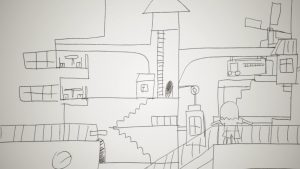 What about the premiere then? Hey, I’m not blind – obviously it was spectacular. You have to stipulate to the fact that all Yuasa material, be it movies or TV, will grab you right out of the gate because of the stunning visuals on display – it’s what comes after that can prove tricky. But Yuasa and team changed some things up from the manga – adding a prologue that was entirely original – and that definitely helped. I also suspect that the nature of Oowara Sumito’s story lends itself to the screen better than the page – what’s meant to be dynamic can sometimes comes off flat in its original form is legitimately off-the-charts dynamic in Science Saru’s capable hands.
What about the premiere then? Hey, I’m not blind – obviously it was spectacular. You have to stipulate to the fact that all Yuasa material, be it movies or TV, will grab you right out of the gate because of the stunning visuals on display – it’s what comes after that can prove tricky. But Yuasa and team changed some things up from the manga – adding a prologue that was entirely original – and that definitely helped. I also suspect that the nature of Oowara Sumito’s story lends itself to the screen better than the page – what’s meant to be dynamic can sometimes comes off flat in its original form is legitimately off-the-charts dynamic in Science Saru’s capable hands.
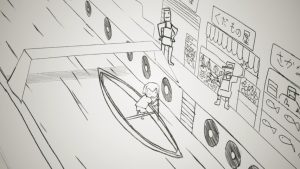 I also have a measure of skepticism because the last plucky girls make anime anime that everyone raved about, Shirobako, was a mixed bag for me (if it had held its nerve and been the story it should have been, I’d have felt differently). But that’s not Eizouken’s problem, it’s mine, and so far this show is doing just fine under its own power. It’s the story of a genki newly-minted 10th-grader named Asakusa Midori (Itou Sairi) who lives in a fabulously bizarre town called Shibahama (whether this is any allusion to the legendary rakugo I don’t know). Bridges connect to nowhere, water flows where it shouldn’t, and it all looks much more interesting on the screen than it did on the page.
I also have a measure of skepticism because the last plucky girls make anime anime that everyone raved about, Shirobako, was a mixed bag for me (if it had held its nerve and been the story it should have been, I’d have felt differently). But that’s not Eizouken’s problem, it’s mine, and so far this show is doing just fine under its own power. It’s the story of a genki newly-minted 10th-grader named Asakusa Midori (Itou Sairi) who lives in a fabulously bizarre town called Shibahama (whether this is any allusion to the legendary rakugo I don’t know). Bridges connect to nowhere, water flows where it shouldn’t, and it all looks much more interesting on the screen than it did on the page.
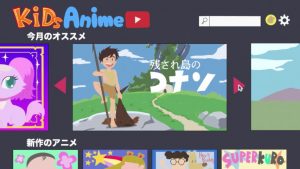 Here’s where that prologue really pays dividends, because it provides the most memorable scene of the premiere. Midori – as a grade-schooler newly moved to town – watches Miyazaki’s Future Boy Conan and is utterly entranced, realizing for the first time that the anime she loves are actually made by people. In the first place anyone who loves animation has surely had that experience (it was probably Fantasia with me). And in the second place Science Saru had to recreate the original frame by frame (under Choi’s supervision) because they couldn’t get the rights. That’s a character’s great love for anime being communicated through the anime staff’s great love for anime.
Here’s where that prologue really pays dividends, because it provides the most memorable scene of the premiere. Midori – as a grade-schooler newly moved to town – watches Miyazaki’s Future Boy Conan and is utterly entranced, realizing for the first time that the anime she loves are actually made by people. In the first place anyone who loves animation has surely had that experience (it was probably Fantasia with me). And in the second place Science Saru had to recreate the original frame by frame (under Choi’s supervision) because they couldn’t get the rights. That’s a character’s great love for anime being communicated through the anime staff’s great love for anime.
 Midori has a best friend, Kanamori Sayaka (Tamura Mutsumi), a hard-headed tough girl who has “producer” written all over her. She handles the practical side of life for Midori and indulges her inexplicable (to Sayaka) love for anime. In exchange for four bottles of milk she agrees to attend the anime club’s screening (which turns out to be Future Boy Conan) with Midori, where they meet rich girl-model Mizusaki Tsubame (Matsuoka Misato), on the run from her parents’ henchmen. She loves anime as much as Midori but has been strictly forbidden from joining the anime club, which leads to an escape and chase scene that’s classic Yuasa madness on display.
Midori has a best friend, Kanamori Sayaka (Tamura Mutsumi), a hard-headed tough girl who has “producer” written all over her. She handles the practical side of life for Midori and indulges her inexplicable (to Sayaka) love for anime. In exchange for four bottles of milk she agrees to attend the anime club’s screening (which turns out to be Future Boy Conan) with Midori, where they meet rich girl-model Mizusaki Tsubame (Matsuoka Misato), on the run from her parents’ henchmen. She loves anime as much as Midori but has been strictly forbidden from joining the anime club, which leads to an escape and chase scene that’s classic Yuasa madness on display.
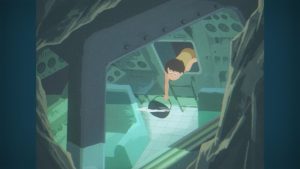 There’s a lot to like here, truly. Anyone who’s attended an anime screening for the first time, dealing with the social anxiety, can surely identify with that moment. When Midori and Tsubame realize that the other is an artist (concepts and figures, respectively) kismet kicks in – and sly Sayaka sees the possibilities here. While I thought dragonfly fantasy sequence went on a little too long, there’s no denying it was spectacular. And I loved the voice-generated sound effects (a Yuasa trademark) scattered through all the fantasy sequences. I also approve of the choice to use live-action actors for Midori and Tsubame, which makes everything feel a bit more distinct. Itou, especially, gives a very unusual performance here, which I imagine not everyone will love (much like Kitta Izumi in Watamote and Yoshitani Ayako in Nazo no Kanojo X).
There’s a lot to like here, truly. Anyone who’s attended an anime screening for the first time, dealing with the social anxiety, can surely identify with that moment. When Midori and Tsubame realize that the other is an artist (concepts and figures, respectively) kismet kicks in – and sly Sayaka sees the possibilities here. While I thought dragonfly fantasy sequence went on a little too long, there’s no denying it was spectacular. And I loved the voice-generated sound effects (a Yuasa trademark) scattered through all the fantasy sequences. I also approve of the choice to use live-action actors for Midori and Tsubame, which makes everything feel a bit more distinct. Itou, especially, gives a very unusual performance here, which I imagine not everyone will love (much like Kitta Izumi in Watamote and Yoshitani Ayako in Nazo no Kanojo X).
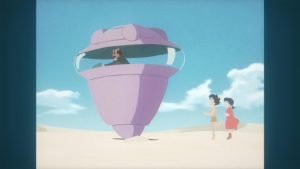 I don’t know if all this will have staying power, because I don’t know if the story does. There are sure to be fantastical set pieces regularly, though they may lose some of their impact with repetition, and the core premise itself will have to have the legs to carry the series. But there’s no shortcut to knowing that – only time will tell. What I do know is that this was a fantastic display of artistic brilliance, and the love for animation that comes across in the first episode is absolutely contagious. Maybe Eizouken ni wa Te a Dasu na! is just one of those stories that needed to be animated to truly blossom, or maybe it needed someone exceptional like Science Saru to elevate it – but either way, I feel a lot more confident about this series than I did an hour ago.
I don’t know if all this will have staying power, because I don’t know if the story does. There are sure to be fantastical set pieces regularly, though they may lose some of their impact with repetition, and the core premise itself will have to have the legs to carry the series. But there’s no shortcut to knowing that – only time will tell. What I do know is that this was a fantastic display of artistic brilliance, and the love for animation that comes across in the first episode is absolutely contagious. Maybe Eizouken ni wa Te a Dasu na! is just one of those stories that needed to be animated to truly blossom, or maybe it needed someone exceptional like Science Saru to elevate it – but either way, I feel a lot more confident about this series than I did an hour ago.


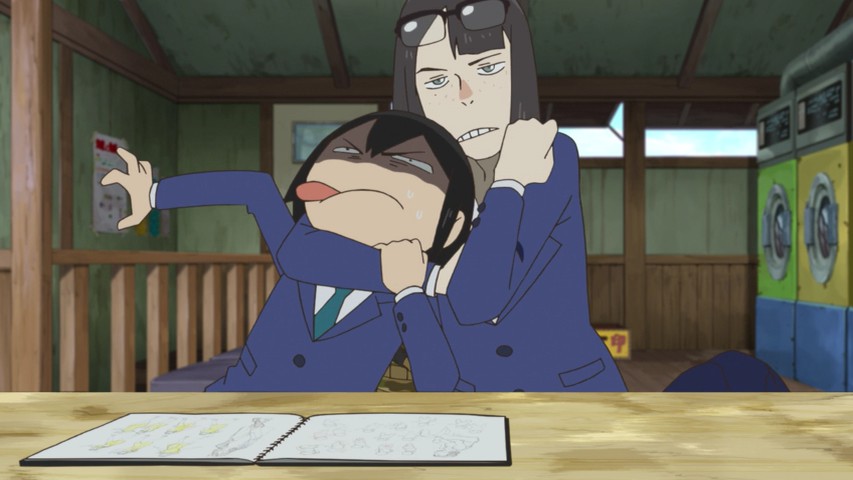
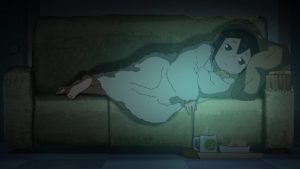
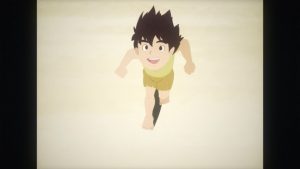
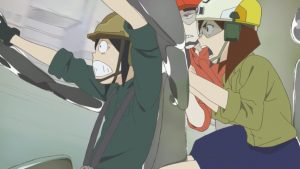
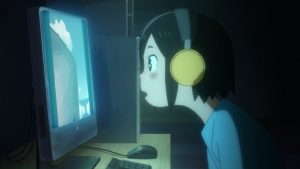

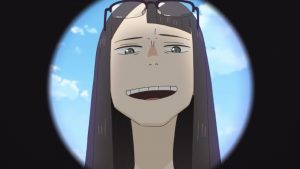
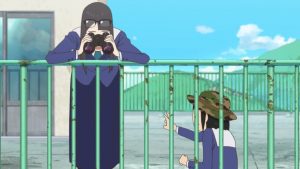
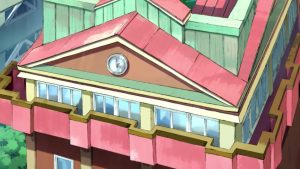

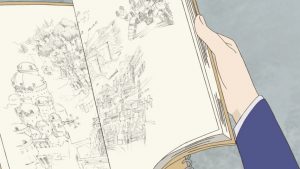
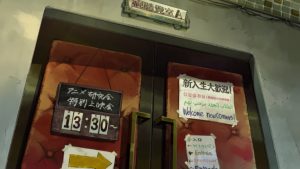
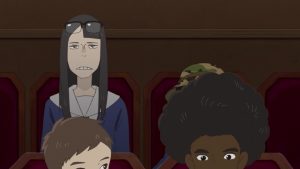
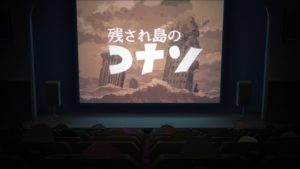

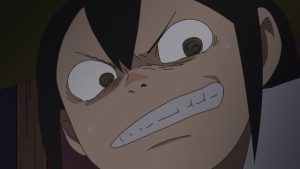
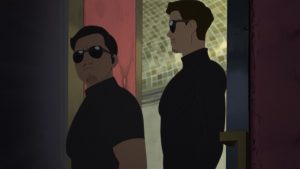
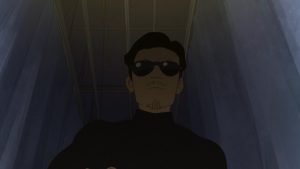

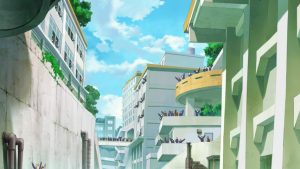
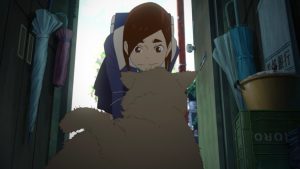
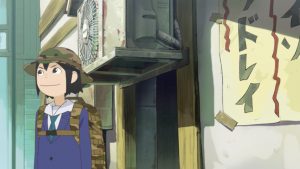
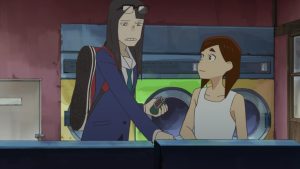
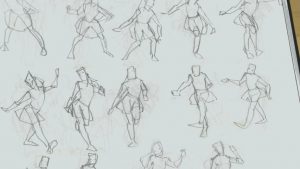
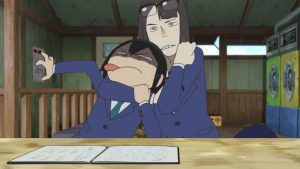

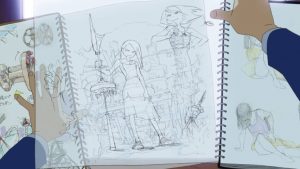
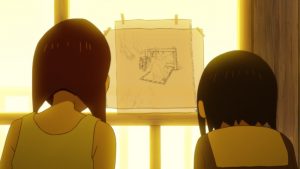
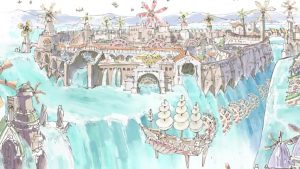
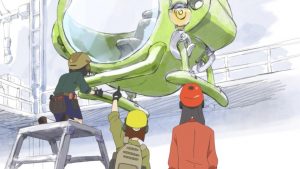
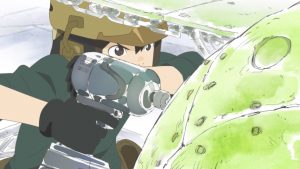
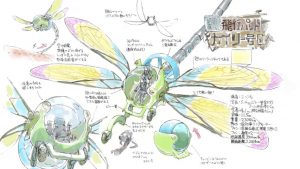
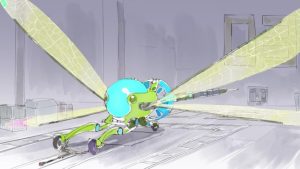
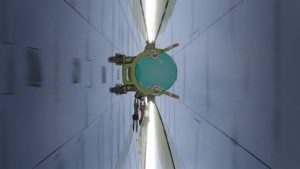
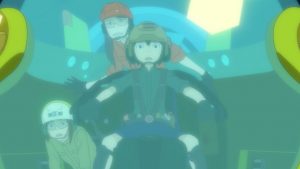
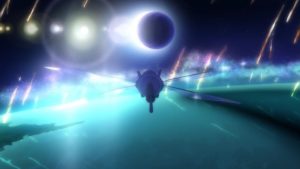
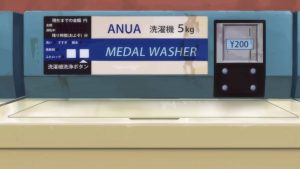
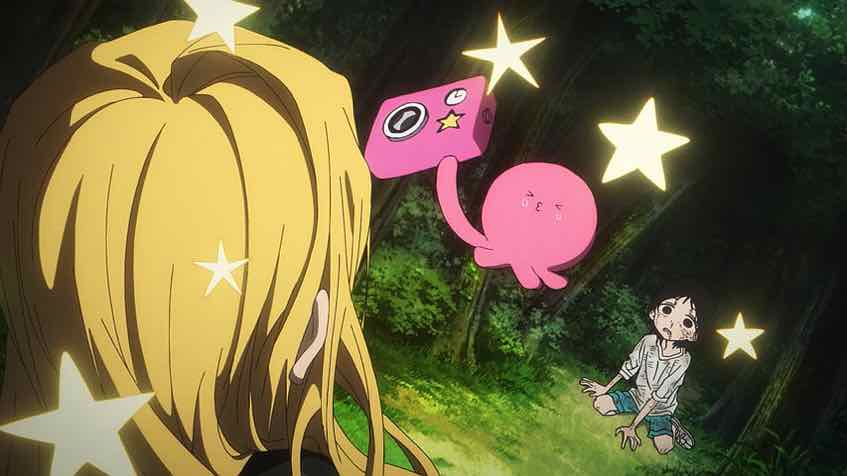
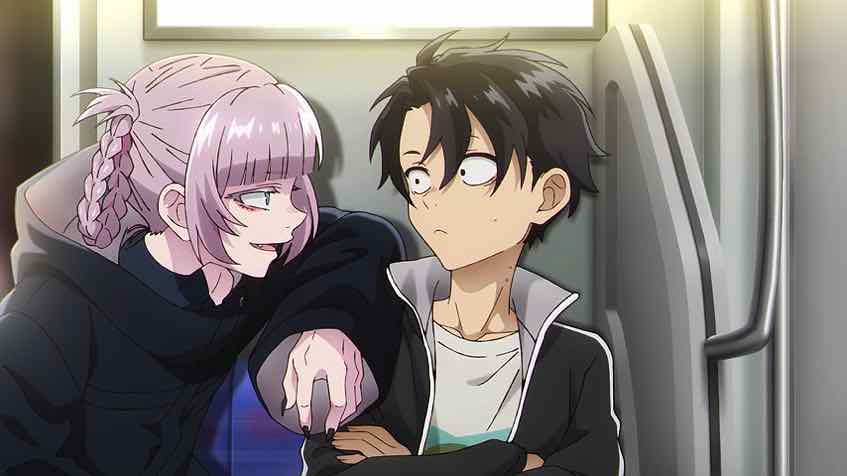
Simone
January 6, 2020 at 11:34 pmI’m surprised that, even with the fact that you’re praising it, you still come off as rather restrained about this show. I know I wouldn’t, I watched the premiere yesterday evening and it totally blew me away. It was beautiful and awe-inspiring, and the sequence in the dragonfly ship could have gone on ten more minutes without me getting tired of it, so creative and funny it was.
I’m really looking forward to it. I don’t expect it to get even partially grounded in reality like Shirobako was, and stay more as a tribute to animation as an art form in itself, seen through the passion of young amateurs trying to learn it. I also hope there’s not too much drama from the ojousama’s family, because frankly the trappings and wonders of the creative process alone can easily provide material for a whole season of this.
Guardian Enzo
January 6, 2020 at 11:58 pmI don’t know how eight paragraphs of praise for the premiere can come off as restrained, but whatever. My reserve comes not from what was in the first episode, but uncertainty about the source material and about Yuasa’s ability to sustain the high. And I thought I made that pretty clear.
Litho
January 7, 2020 at 1:00 amYuasa hit and sustained the highs pretty well in Kaiba (original), Kemonozume (original) and Ping Pong (adaptation), but he kinda stumbled with Tatami Galaxy (adaptation) and probably failed with Devilman Crybaby (let’s just conveniently blame Netflix for this one), so I suppose a certain level of apprehension is warranted, at least with regards to TV series’ (vs his shorts or feature films). Having said that, I enjoyed this first ep immensely and am looking forward to the next one. Probably some bias there, since this was probably the only series of the season I was looking forward to, but meh, there’s bias everywhere anyway.
Also just got reminded that I still haven’t seen that Yoru wa Mijikashi Aruke yo Otome film of his from a couple of years ago. Need to tick that box this week.
Guardian Enzo
January 7, 2020 at 9:07 amDefinitely solid midrange Yuasa and worth seeing. As close to his default state as any of his projects, I think. Actually of those two more or less simultaneous releases I actually preferred Yoake Tsugeru Lu no Uta.
sonicsenryaku
January 7, 2020 at 2:28 pmBlame netflix? why? They had nothing to do with how the adaptation had turned out. In interviews with Yuasa, he talks about how he was able to adapt the manga with a great deal of creative freedom; so much so that in fact, he had to hold himself back from getting too out of hand with the graphic nature of the show (Crazy huh? Imagine that). Most of the time, netflix’s involvement in their “originals” usually come down to them slapping their name on the production committee and calling it a day. They usually don’t have a huge deal of involvement in how an adaptation goes. Here and there, they may suggest an anime of a particular design be licensed by them because they think it would cater to a more western crowd, like B: the beginning, but even their involvement in that series was very limited. The vision of the anime was already solidified before they ever came along. There’s this misconception that Netflix dictates the direction their “anime originals” take, and design them in a particular way but that’s not the case at all. The last few years of Netflix being on anime production committees have only been them licensing anime that they believe fit the model of American streaming
Simone
January 7, 2020 at 6:42 pmWell, my point was, I loved this SO MUCH, even eight paragraph of praise with only a slight hint of reserve are restrained compared to what I would write :D. I realise it’s still a pretty enthusiastic endorsement.
Guardian Enzo
January 7, 2020 at 7:20 pmPoint taken!
Collectr
January 7, 2020 at 2:10 amSo it wasn’t just me. I had no expectations for the show (high school girls doing anime? seriously?), but it started spectacularly and held me for the duration. The artwork for the city is amazing; shades of Escher at times. The seiyuu for Midori is terrific – a distinctive voice for a distinctive genki girl. The sly sidekick Kanamori has lots of potential too. And I liked the brief (demonstrated, not explained) exposition of how concept and character art interplay in the anime process. Mizusaki still seems a little indistinct so far, but that’s probably because of the contrast with the other two main characters. Looking forward to more!
Rita
January 7, 2020 at 6:27 amSo I totally agree with Yuasa’s work being hit or miss, but his artistic creativity has never been part of the question. And I think with this canvas – a series about animation and imagination, even if the story doesn’t hold up I could probably watch the whole thing and not get bored (knock on wood) just because it seems like such a good fit. That’s not to say I don’t want the story the hold up, but this was the only episodes in recent history that the sheer artistic direction and design knocked everything else out of the water.
And maybe in part it’s because it feels like there’s a lot LESS of crazy abstract flights of fancy nowadays in anime (tho tbf I don’t think Yuasa would ever have been ‘standard’ in any era). I was just talking to a friend how my standards for the medium as a whole have drastically changed. There’s still really good stuff, but because of the sheer number of new series flooding the marketplace the bottom and medium band have also ballooned. (I also probably can’t distinguish isekai from one another now in some cases but that’s always been an oversaturation problem). So the contrast might have made me more inclined to believe the rest of this show could be a disaster and I could still just be content with just the art and animation. Obviously, I really hope both sides meet in the middle because then I think it’d have a good chance of being a real masterpiece
Guardian Enzo
January 7, 2020 at 8:52 amI think directors like Yuasa, Matsumoto and Tachikawa do stand out more because of the overall homegenization of anime that you mention. Looking back at my own history, though, art and animation alone have very rarely been enough to keep me on-board if the story and characters aren’t at least modestly engaging. They certainly were for a week here, so I’m hopeful.
LamontCranston
July 26, 2022 at 1:27 pmThe waterfall city is ripped off from the Dinotopia books
Color2413
January 7, 2020 at 6:50 amThis show made me feel good about the future of anime, because it shows that outlier shows with real creative flair can still be made in even the “production committee” environment. The first episode greatly exceeded my expectations, in a way reminding me of “Paprika.”
Guardian Enzo
January 7, 2020 at 8:56 amIt must be said, though, that Science Saru to a certain extent operate in the fashion of KyoAni. They’re not totally exempt from the production committee process but they’re primarily a theatrical studio and their revenue stream is quite different from most studios, and almost all of their staff are in-house employees rather than vagabond contractors. It’s basically a studio built around Yuasa’s star power as a director.
Stöt
January 7, 2020 at 6:58 amI might have stumbled over this without this blog, but it certainly wouldn’t have been the brilliant start to anime in 2020 it was for me without this post. Thanks!
Guardian Enzo
January 7, 2020 at 8:53 amThat’s why I’m here!
Marty
January 7, 2020 at 7:17 amI really liked “The Night is Short, Walk on Girl,” so I have high expectations for this adaptation.
Toni
January 7, 2020 at 8:34 amI didn’t know the reason for the remaking of the Conan bits, but the new art style sure looks beautiful in those classic scenes.
sonicsenryaku
January 7, 2020 at 2:11 pmI fucking loved everything about this; definitely my favorite premiere of the season right now; and yea, I’m totally a fan of Yuasa. Counter to expectations, it’s not because of his eccentricity with visuals (although i’ve always been down with how he uses perspective distortion and uncanny framing as a storytelling tool), but rather, how human a lot of his work is. Yuasa is simply one of the best directors in the business when it comes to handling character interplay. The way he communicates dynamics between characters feel as if he perceives them as real people on a set, knowing just what to do to get his animated characters to communicate through body language the emotional realism of human interactions. Just read interviews regarding how he goes about envisioning his characters and you can see just the level of thought he infuses into every decision he makes regarding how characters should look, move, and feel. Yuasa has a deep understanding of interpersonal psychology and is a master of representing the nuances of human behavior in his work. He’s also quite a sap as most of his work take a wholesome viewpoint when exploring and unraveling the themes and ideas found in his narratives. Works like Ping Pong, the night is short, ride your wave, and tatami galaxy are all really good examples of this. He’s got a real talent for accurately depicting slices of life and injecting them with such a relatable human touch. I get feeling turned off by Yuasa’s visual style, but i will probably never understand how someone could find Yuasa’s works as lacking emotional nuance or pathos
Simone
January 7, 2020 at 6:48 pmAbout the visuals, I actually like that this time his style feels “prettier” than usual in terms of character design. I don’t mind the more ugly/distorted one of, say, Ping Pong, but this was really nice.
Litho
January 8, 2020 at 1:26 amWait, did Ping Pong not make your Best of Decade list? That’s a travesty right there, on par with the last American Presidential Election.
Snowball
January 8, 2020 at 2:12 amI am a bit more positive about 2020 than I was 20 minutes ago. This was a winning opening episode. Visually brilliant, decent cast so far and rather quirky in nature.
tsirrus
January 12, 2020 at 2:04 amDisliked Ping Pong Club’s visuals. I’m a very visual of viewer and bad animation or un-appreciation of the art-style of even a good story will kill it for me.
That being said the intro (and an original one at that??) totally got me hooked, and loved that we went through 4 different art styles (crayon, the movie, the reality, and the firefly segment’s ending visual) in a single episode totally blew my mind! To me this ep was almost grandiose enough to be its own 25 min movie (a la Makoto Shinkai’s short movies) if the story would have ended with more closure.
I have a “how can they follow up such an ep!” feeling waiting for the next episode…